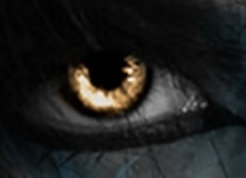Unexplained Siberia "Valley of Death"
By James Donahue
Strange things happen in Siberia, that massive largely unexplored and unoccupied territory of Eastern
Russia that constitutes almost all of North Asia. There was that meteor that exploded over the Ural Mountains on February
15, 2013, and the mysterious "Tunguska event" that leveled the trees for miles around in 1908.
Then there was the strange "Death Mountain Incident" that left nine experienced hikers dead in the
snow, also in the Ural Mountains, in 1959. Whatever happened to them remains among Russia’s most compelling unsolved
mysteries.
And then there is the so-called "Valley of Death" in Siberia’s northwest Yakutia, in the Upper
Viliuy River basin, where yet another violent cataclysm occurred about 800 years ago. As happened at Tunguska, this explosive
event toppled the forest for hundreds of square kilometers and even tossed stones. And found throughout this remote territory
are mysterious giant metal structures that look like upside-down igloos. The natives refer to them as cauldrons.
Most of the "cauldrons" are virtually buried in the permafrost, with their tops revealed only by patches
of strange vegetation. A few of the structures are exposed, however, and they contain arches leading to metal chambers inside.
Nomads have claimed to have used them for temporary shelter and they say the interiors are comfortably warm even when the
weather outside is severely cold.
The natives warn, however, that anyone who spends more than a single night in these rooms will become
seriously ill and eventually die. The Yakut people regard the area as "very bad, marshy, and beasts do not go there." They
generally give the territory a very wide berth.
A geologist visited the area in 1936, with the help of a native guide. He said he observed a cauldron
along the Olguidakh River. He described it as a smooth metal hemisphere, reddish in color, protruding from the ground. The
walls were about two centimeters thick. The structure was partly buried, but was tipped with enough of an opening exposed
it was possible to ride under it on a reindeer.
Another explorer, Mikhail Koretsky of Vladivostok, gave a vivid description of yet another cauldron
site along a tributary of the Viliuy River in 1933, 1937 and again in 1947.
"As for mysterious objects, there are probably a lot of them there, as in three seasons I saw seven
of those ‘cauldrons’. They all struck me as totally perplexing: for one thing, there was their size – between
six and nine meters in diameter.
"Secondly, they were made of some strange metal. Everyone has written that they were made of copper,
but I’m sure it isn’t copper. The thing is that even a sharpened cold chisel will not mark the ‘cauldrons.’
The metal doesn’t break off and can’t be hammered."
Koretsky said the metal is covered "with a layer of some unknown material resembling emery. Yet it’s
not an oxidation layer and not scale. It can’t be chipped or scratched either.
"We didn’t come across shafts going down into the ground with chambers. But I did note that
the vegetation around the ‘cauldrons’ is anomalous—totally different from what’s growing around. It’s
more opulent: large-leaved burdock; very long withes; strange grass, one and a half or two times the height of a man.
"The whole group of us spent the night. We didn’t sense anything bad, and we calmly left without
any sort of unpleasant occurrences. Nobody fell seriously ill afterwards. Except that three months later one of my friends
lost all his hair. And on eht left side of my head, the side I slept on, three small sore spots the size of match-heads appeared.
I’ve tried to get rid of them all my life, but they’re still with me today."
Koretsky said the Yakut guide he traveled with told him that he once found several perfectly round
cauldrons that stood higher than a man, apparently resting on top of the ground. He said they looked brand new. Later when
he visited the area, he said the same structures appeared broken and scattered.
The old Yakut say that the legend exists that every six or seven centuries a giant "fireball" occurs
in this strange area and explodes, scorching the trees and everything around.
The Yakut legends contain many references to explosions, fiery whirlwinds and blazing spheres rising
into the sky from the area they call the Valley of Death. Somehow this phenomenon is associated with the mysterious "iron
houses" found there. The legends say the strange blazing spheres are produced by "an orifice belching smoke and fire" that
has a "banging steel lid."
There is one other odd incident linked to this strange place that should be included in this story.
It seems that in the 1950s the Soviet military chose the area for testing its new nuclear arsenal because it was uninhabited.
The Russians remained very secretive about things, especially related to its military during those
Cold War years. But the German radio station Deutsche Welle reported that when the Soviets tested a 10-kilogram bomb there
in 1954, the blast reached an unexpected level of 20 to 30 megatons and was registered by seismic labs all around the world.
Nobody could explain what happened there.

